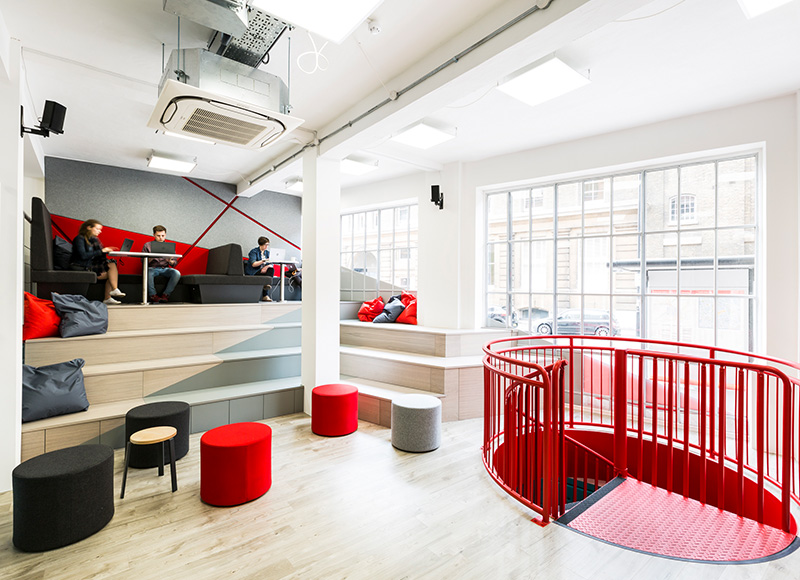All business want to make the work environment as happy, as healthy, and as conducive to productivity as possible. The average person spends around 90,000 hours at work during their lifetime, so being in an environment that is inviting is key. In fact, research has found that when people are happy at work, they are likely to be 12% more productive.
Interior design is a vital element when it comes to creating a positive work environment, but why is that the case?
Why interior design is so important
Interior design should always consider creating a working environment that is more efficient and effective and encourages employees to increase their levels of productivity.
And, with the way we work constantly changing and evolving, this is vital in our office spaces. With more and more people hot-desking and looking for collaborative spaces, a business may need to use different equipment and space from one project to the next, meaning workplaces need to be flexible, intuitive and uncomplicated.
Tip 1: Adapt to the demands of tech
It should come as no surprise that as we embrace more and more advanced technology, our office spaces also have to adapt. Smartphones, tablets, laptops and various smart devices are now central to not only how we work, but how we relay information; if offices aren’t designed to accommodate this technology and become embedded in the Internet of Things (IoT), this will ultimately hamper productivity.
Tip 2: Increase flexibility
More and more employees are now working from home, or working away from the company’s main office. In fact, estimates suggest that the number of people working from home has increased by 27% in the last two years.
However, smart office spaces must be designed to deal with times when the office is full, and also when there is a fallow period. The fixed office is no longer viable – rather, flexible spaces that can be used for multiple purposes, and are designed to ensure different company departments are not kept apart, will become more prominent. Trends such as Neighbourhood Based Choice Environments are a good example of this.
Tip 3: Create harmony and productivity
Work environments can be stressful – that’s something that will never change. However, the way that office spaces are designed can help to alleviate pressure in the tensest of situations. Colour schemes that are representative of nature, such as greens, blues and neutral stones, as well as dark colours for furniture, can be relaxing and will also give the office space a touch of classical professionalism. The era of standing out is dead; the office of the future will be designed to make workers feel comfortable and at home.
